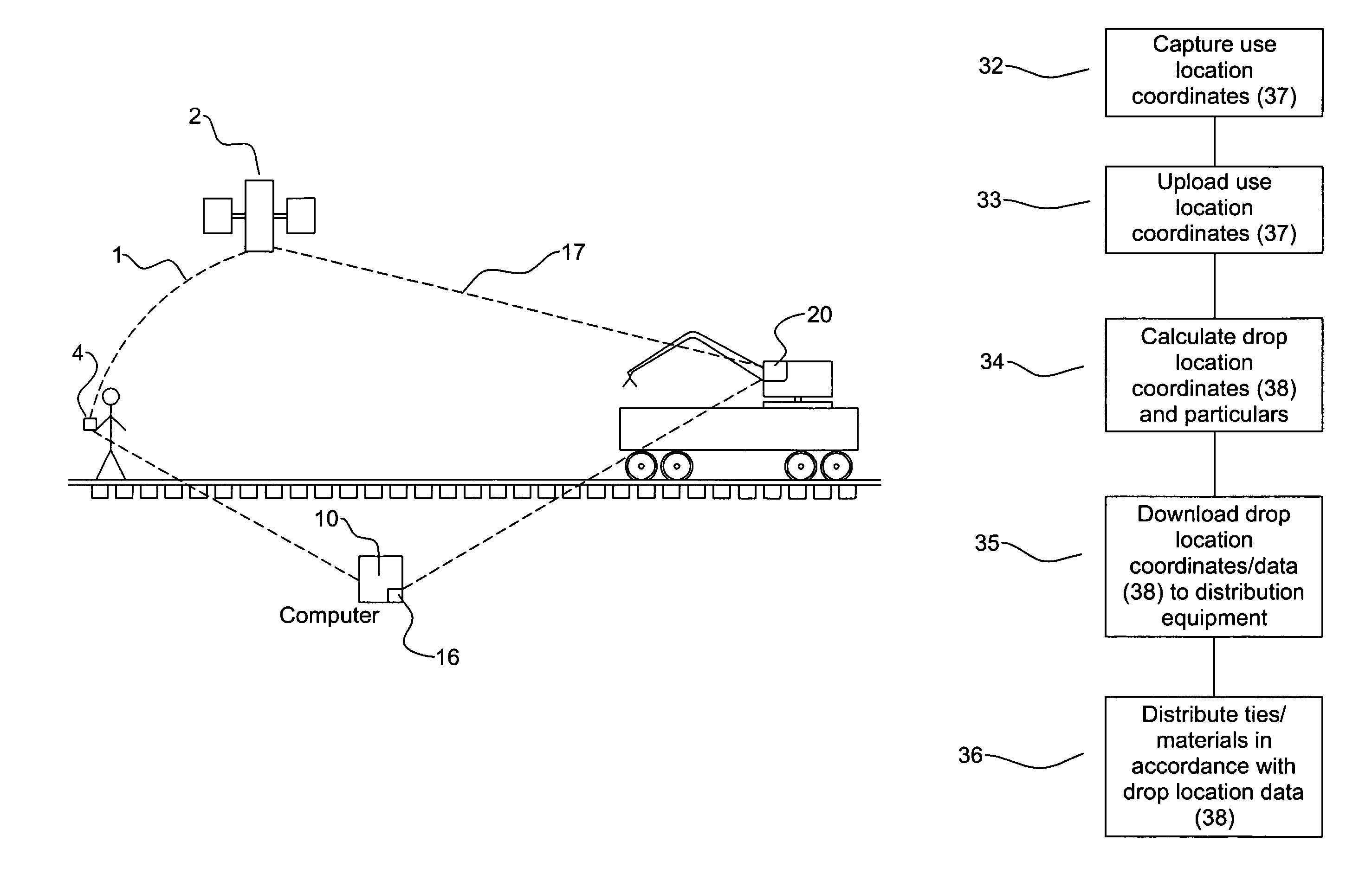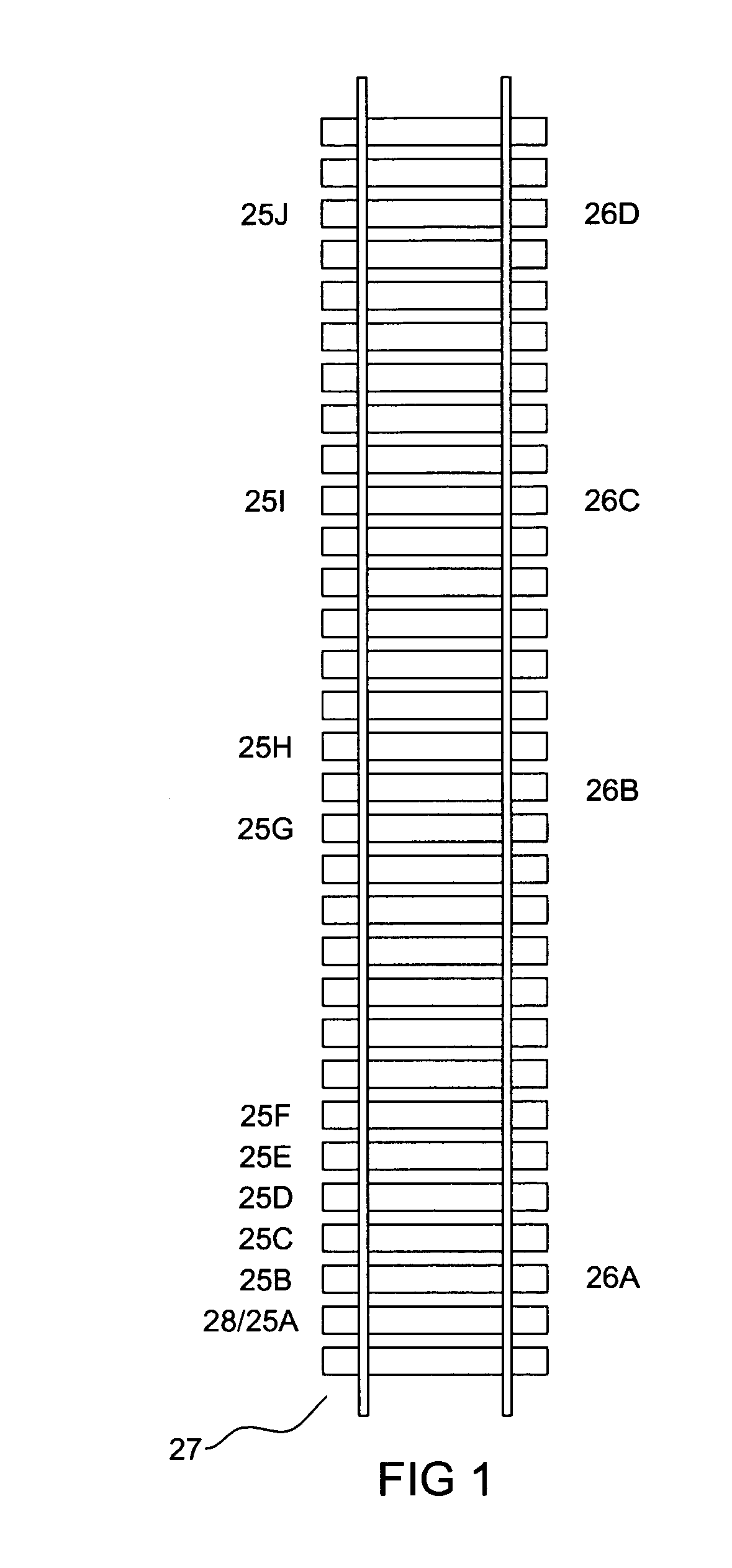Method and apparatus for adaptive coordinated distribution of materials in railway maintenance and other applications
a technology for railway maintenance and other applications, applied in the direction of electric digital data processing, railway tracks, instruments, etc., can solve the problems of not being able to distribute the right number of ties, not being able to meet the needs of the equipment used to do tagging, not being able to mark the crew or the data capture or acquisition crew,
- Summary
- Abstract
- Description
- Claims
- Application Information
AI Technical Summary
Benefits of technology
Problems solved by technology
Method used
Image
Examples
Embodiment Construction
[0063]As required, detailed embodiments of the present invention are disclosed herein; however, is to be understood that the disclosed embodiments are merely exemplary of the invention, which may be embodied in various forms. Therefore, specific structural and functional details disclosed herein are not to be interpreted as limiting, but merely as a basis for the claims and as a representative basis for teaching one skilled in the art to variously employ the present invention in virtually any appropriately detailed structure or method.
[0064]Prior Art:
[0065]The method which has been used in the prior art in terms of replacement of ties constitutes a three-pass approach. Firstly, a marking crew or a sighting crew comes along the track and marks particular railroad ties which are to be replaced—typically with a splash of paint or the like. In a second pass, another crew comes along the track behind them and, using the marks that the marking crew has generated, drops the appropriate num...
PUM
 Login to View More
Login to View More Abstract
Description
Claims
Application Information
 Login to View More
Login to View More - R&D
- Intellectual Property
- Life Sciences
- Materials
- Tech Scout
- Unparalleled Data Quality
- Higher Quality Content
- 60% Fewer Hallucinations
Browse by: Latest US Patents, China's latest patents, Technical Efficacy Thesaurus, Application Domain, Technology Topic, Popular Technical Reports.
© 2025 PatSnap. All rights reserved.Legal|Privacy policy|Modern Slavery Act Transparency Statement|Sitemap|About US| Contact US: help@patsnap.com



